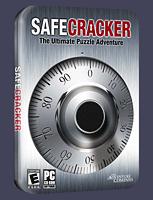
Myst IV: Revelation is a 2004 adventure video game, the fourth installment in the Myst series, developed and published by Ubisoft. Like Myst III: Exile, Revelation combines pre-rendered graphics with digital video, but also features real-time 3D effects for added realism. The plot of Revelation follows up on plot details from the original Myst. The player is summoned by Atrus, a man who creates links to other worlds known as Ages by writing special linking books. Almost twenty years earlier, Atrus' two sons nearly destroyed all of his books and were imprisoned; Atrus now wishes to see if his sons' imprisonment has reformed them. The player travels to each brother's prison, in an attempt to recover Atrus' daughter Yeesha from the brothers' plot.

Voyage: Inspired by Jules Verne is a point-and-click adventure game with pre-rendered graphics, developed by Kheops Studio and published by The Adventure Company for the PC in 2005. The game's story focuses on a French adventurer's journey to the Moon in the 19th century, and the ancient lunar civilization he subsequently finds.

Return to Mysterious Island is a 2004 graphic adventure game developed by Kheops Studio and published by The Adventure Company. Based on Jules Verne's 1875 novel The Mysterious Island, the game casts the player as Mina, a shipwrecked woman forced to survive on an uncharted island.

Atlantis Evolution is a 2004 graphic adventure game developed by French studio Atlantis Interactive Entertainment and published by The Adventure Company. It is the fourth in the Atlantis series by Cryo, and the first one made by Atlantis Interactive Entertainment, founded by former Cryo developers. Unlike the second and the third game in the series, the game revolves entirely around Atlantis. It was followed by The Secrets of Atlantis: The Sacred Legacy in 2006.

Kheops Studio was an independent video game development studio created in September 2003. Its games were published by Microïds, which acquired the brand and intellectual property as insolvency assets of Cryo Interactive in 2002. The company was co-founded by Benoît Hozjan, who also served as the creative director for the studio and Stéphane Petit, who served as technical director. Kheops developed adventure games for the PC platform and released several major successful games. The studio is best known for creating games that have been described by the developer as "cultural entertainment", that is, games which are heavily drawn from historical or literary sources to include a mixture of history and fiction. After filing for bankruptcy, the studio was closed down in January 2012.

Echo: Secrets of the Lost Cavern is a computer adventure game released in July 2005. It was developed by Kheops Studio and published by The Adventure Company. It is very similar to previous Kheops Studio games; the interface and gameplay are almost identical to Return to Mysterious Island. The player takes the role of Arok, a 15-year-old European Homo sapiens from the Paleolithic period.
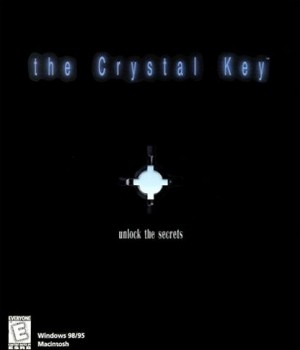
The Crystal Key is a 1999 graphic adventure video game developed by Earthlight Productions and published by DreamCatcher Interactive. A work of science fiction, it casts the player as an interstellar explorer on a quest to save Earth from Ozgar, a malevolent alien conqueror. The player uses portals to traverse multiple planets, including desert and jungle worlds, while collecting items and solving puzzles. The Crystal Key was conceived by John and Jennifer Matheson in the mid-1990s, and it underwent a five-year creation process hampered by problems with its technology. It was signed by DreamCatcher as part of the publisher's strategic push into the adventure game genre.

Dracula 3: The Path of the Dragon is a 2008 point-and-click adventure video game developed by Kheops Studio for Microsoft Windows, and published by MC2 France under their Microïds label in Europe and Encore in North America. In 2010, an abridged version of the game developed by Tetraedge Games and published by Chillingo was released in a three-part episodic form for iOS. The full version of the game was ported to OS X in 2010, published by Coladia. Also in 2010, the three-part iOS version was made available for PC as the Dracula Series. In 2014, the abridged iOS version was made available as a single game on Steam.

Dracula: Resurrection is a 1999 graphic adventure video game developed by Index+. Set in 1904 Transylvania, the game serves as a follow-up to Bram Stoker's novel Dracula. Seven years after the death of Count Dracula, Jonathan Harker's wife Mina finds herself mysteriously drawn back to Transylvania. Jonathan subsequently travels to Borgo Pass in an effort to rescue her. The player assumes the role of Jonathan and uses a point-and-click interface to solve puzzles and navigate the game's world, often with the help of an object called the Dragon Ring.

Egypt 2: The Heliopolis Prophecy is an adventure video game developed and published by Cryo Interactive for the PC and PlayStation in 2000. It was released for Mac OS X in May 2012. Egypt 2 follows Egypt 1156 B.C. and is followed by Egypt III.

Egypt III, known as The Egyptian Prophecy in North America, is a 2004 graphic adventure game developed by Kheops Studio and published by The Adventure Company. The player must solve an array of ancient riddles that will help a dying Pharaoh survive and restore Egypt to glory. The game is the third and final game in the Egypt trilogy, following Egypt 1156 B.C. and Egypt II: The Heliopolis Prophecy. In 2010, Microïds released an adaptation of the game, split into parts, for the Apple iPhone.
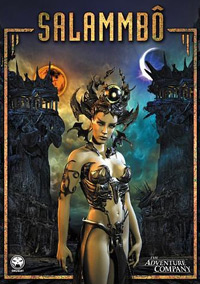
Salammbo: Battle for Carthage is a first-person perspective adventure video game. It began development at Cryo Interactive, but the company went bankrupt during production. The Salammbo team was ultimately acquired by DreamCatcher Interactive, which finished the game's development.

Jake Rodkin is an American video game designer, writer, graphic designer, and podcaster. He was the co-project leader of Tales of Monkey Island and the co-project leader and co-writer of The Walking Dead, Poker Night at the Inventory, and Puzzle Agent 2. He was also the director of the fifth episode of Sam & Max: The Devil's Playhouse, and designer and writer of Firewatch.

Daydream Software was a Swedish video game developer founded in 1994. They released four games before closing in 2003.
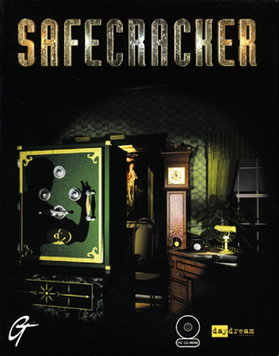
Safecracker is a 1997 puzzle adventure game developed by Daydream Software and published by GT Interactive. It casts the player as a security professional, whose goal is to infiltrate the mansion headquarters of a safe manufacturer and break into 35 of its unusual models. Each safe is guarded by a different type of puzzle, including sliding tiles, anagram codes and translations from braille. The player's progression is nonlinear: the mansion can be explored, and its safes unlocked, in multiple orders. However, the game must be completed within a 12-hour time limit.
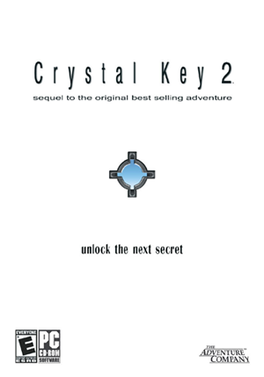
Crystal Key 2, known in Europe as Evany: Key to a Distant Land, is a 2004 graphic adventure game developed by Canadian studio Earthlight Productions, together with Kheops Studio. It was published by The Adventure Company, and is the sequel to the 1999 title The Crystal Key.

Cleopatra: Riddle of the Tomb is a 2007 adventure video game by French developer Kheops Studio. Outside of the United States, it is known as Cleopatra: A Queen's Destiny.

Traitors Gate is a 1999 graphic adventure game developed by Daydream Software. Set in a reproduction of the Tower of London, it follows the story of Raven, an American special agent trying to steal and replace the Crown Jewels of England to safeguard them from a rogue operative. The player assumes the role of Raven and solves puzzles within the Tower while evading the guards. Progression through the game is nonlinear and under a time limit: the player may solve certain challenges in multiple ways, but must win before 12 hours elapse.
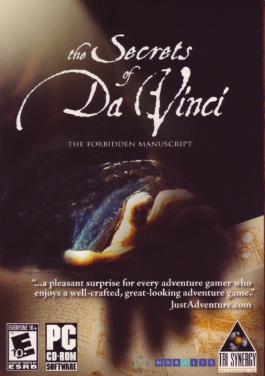
The Secrets of Da Vinci: The Forbidden Manuscript is an adventure game developed by Kheops Studio and published by Tri Synergy on June 7, 2006 on the PC. In 2009 it was released on the Mac OS X.
A safe-cracker is a person capable of opening a safe without either the combination or the key. It may also refer to:
